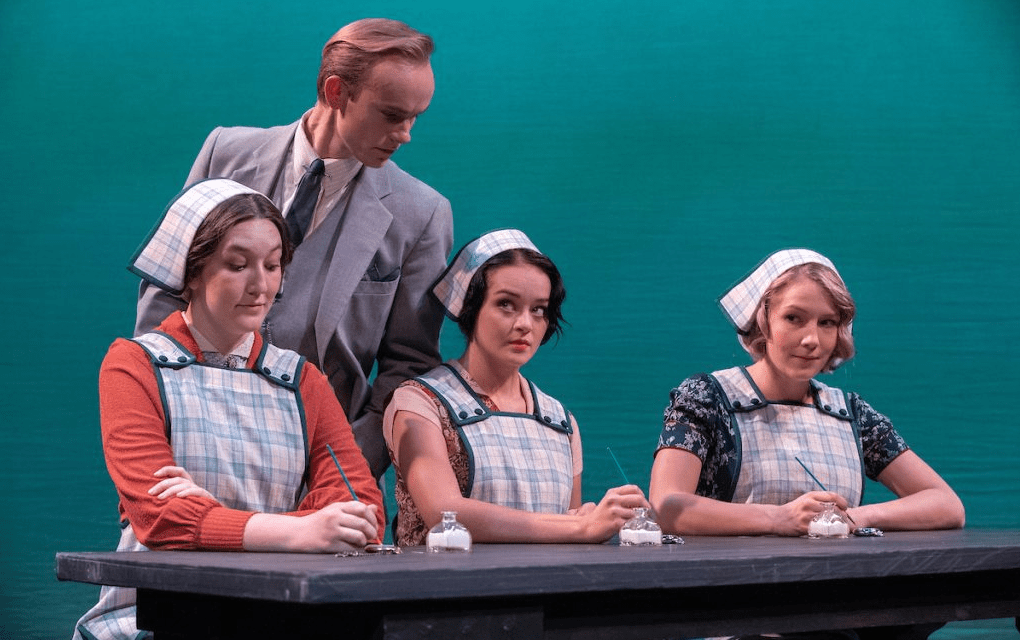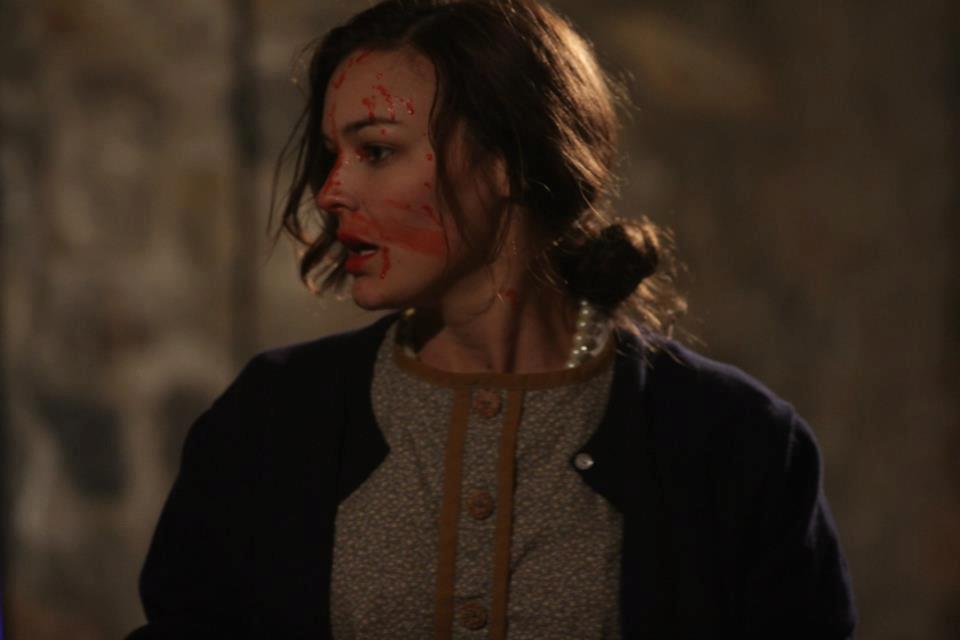PROVO — When women working at a factor in New Jersey start falling ill, the cause seems mysterious. Doctors blame poor hygiene, infectious disease, and bad luck. When the true cause is an occupational hazard that had been hidden from them, the mystery turns into a nationwide scandal, and a fight for justice ensues. Radium Girls is, sadly, a story far too common in the history of the industrial revolution when factory owners cared more about protecting the bottom line than protecting employees. While it is specifically about women working with radioactive material, its story applies just as well to asbestos workers, coal miners, or even my own great-great grandfather, who was sickened by an anti-rust chemical used at the mattress factory where he worked.

Show closes December 8, 2018.
Radium Girls tells the story of female employees of the U. S. Radium Corporation whose job is to paint watch faces with radium paint so that the numbers and hands glow in the dark. It’s detailed work, and to ensure that their paint brushes could do the job, the women were instructed to shape the bristles to a point with their mouth. One by one the women fall sick—often after they leave the company—and languish painfully until they die. Superficially, D. W. Gregory’s script is a retelling of these historical events, but in reality the play is a vehicle to showcase the emotional devastation that occurs when these women were exploited. Almost every human relationship falls apart in Radium Girls: friendships, marriages, engagements, parent-child relationships all are damaged by a company’s hasty embrace of scientific progress.

Mikah Vaclaw as Grace Fryer.
I struggle to imagine a better production of Radium Girls than what director Stephanie Breinholt has created. Breinholt’s staged the play as a character piece and strategically used the intimate space of the Margetts Theatre to her advantage. Breinholt ensured that the body language and interactions among the cast had the utmost realist, which made the disintegrating relationships heartbreaking to watch. Additionally, by placing family scenes in the same location on stage, Breinholt helped me remember previous scenes with the same characters, thus making it easy to see the changes that the characters had experienced. Finally, I enjoyed the way Breinholt varied the rhythm of the play, which ranged from rapid fire dialogue for the reporters’ scenes to moments of quiet solemnity in the hospital.
Breinholt’s greatest risk (and greatest payoff) was to have a lean cast of 9 play the dozens of characters that flutter in and out of the story. The well trained cast was superb at distinguishing their characters, and I sat in eager anticipation to see which character the actors would portray next because I found the variations so delightful. It is also worth mentioning that nearly every American accent was on display at some point in the play—and some foreign ones, too—and all were executed flawlessly.

Dylan Wright as Arthur Roeder.
As for particular actors, Mikah Vaclaw was the star of the play in the role of Grace Fryer. Whether Grace was bantering with her co-workers, dreaming of the future with her fiancé, or writhing in pain as her health diminished, Vaclaw was masterful to watch. Vaclaw made me admire Grace as I watched the character’s wistful sadness as she faced death, or the righteous anger that she felt towards her employer. But the most tender moment of Vaclaw’s performance was when Grace gave up hope of ever having children; watching the character’s dream die was sad in the way Vaclaw delivered the lines in a matter-of-fact way, making it clear that Grace had accepted this reality long before she told her fiancé, Tom.
Dylan Wright played factory manager and later company president Arthur Roeder, who fights tirelessly to shield his company from the financial ruin that would result from accepting liability from his employees’ illnesses. A particularly gripping moment in Dylan Wright’s performance was the panic that seizes Roeder and his business partner Charlie Lee (played by Andrew Groome) when they realize that their company’s radium is causing their employees’ deaths. I also appreciated the way Dylan Wright showed how Roeder wrestled with his conscience while discussing the problems with his wife (played by Clara Wright); the scene humanized Roeder and showed that he was not a ruthless capitalist bent on profit.

Left to right: Meg Flinders as Kathryn, Mikah Vaclaw as Grace Fryer, and Jeanelle Long as Irene.
In the role of Tom, Ben Raymant had a sweet emotional bond with Vaclaw, and I enjoyed watching Tom’s masculine cluelessness about selecting wallpaper for their new house and the way he engaged in wishful thinking when Tom and Grace learn of the death of Irene (another employee at the factory). Jeanelle Long was a major asset to the show in any role she played, but especially as Irene and Mrs. Fryer, the latter a social activist who encourages Grace and Kathryn to sue their former employer. The feminine dignity and power Long brought to the role of Mrs. Fryer was a noticeable contrast to the youthful exuberance of Ilene.
Janes Haycock’s set design featured period light fixtures hanging at irregular heights from the ceiling, a nice touch of abstractness in a otherwise realistic play. Parts of the floor were painted with large versions of vintage ads for radium-infused consumer products, which I found disturbingly clever. Hanna Cutler‘s costume designs were utilitarian and appropriate for the 1920’s setting. I am thankful that Cutler eschewed the stereotypes of the era (like flappers) and focused on the play’s professional setting and the characters’ social status.
No review of Radium Girls is complete without mentioning this astoundingly good script. Gregory could have easily created a preachy show where characters pontificate about injustice. Instead, she lets events unfold on their own and lets the audience naturally absorb the message about the human cost of blind faith in science and capitalism. Gregory’s dialogue seems in every scene has a timeless, real quality to it, and I saw depth in more characters than I usually do in a two-hour play. For example, the way the company executives work to delay and cover-up their negligence, avoid legal liability, and pressure their vulnerable victims into financial settlements seems eerily familiar today in the way modern companies protect powerful employees who engage in sexual misconduct. I also found it telling that she had Roeder cry over the death of a company chemist, a damning indictment of Roeder because he never shed a tear for the deaths of the unskilled women he employed. It is amazing that Gregory can use a moment that should soften a character to actually condemn him further.
Radium Girls works on so many levels: as a showcase for a talented cast, a lesson in a historical tragedy, a touching character piece, and a moving sermon on the importance of caring for others. But it is also fine theatre and one of the best stage productions I have seen all year.





